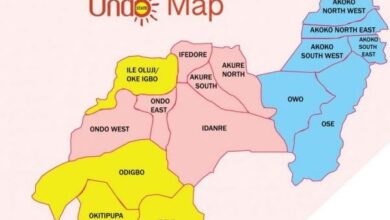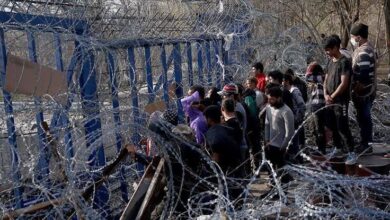Warri youths warned: Olori says drug abuse worse than militancy

This event, the recent China Victory Day parade, held on September 3, 2025, in Beijing’s Tiananmen Square, has sent shockwaves around the world, showcasing the country’s military prowess and signaling a paradigm shift in global politics. This grand event commemorates the 80th anniversary of the victory in the Chinese People’s War of Resistance Against Japanese Aggression and the World Anti-Fascist War, marking a significant milestone in China’s history.
Victory Day is a celebration of China’s triumph over Japan in World War II, which ended on September 3, 1945. The event pays tributes to the Chinese people during the war, which lasted for 14 years and resulted in over 35 million casualties. The Chinese President Xi Jinping maximized the use of the occasion to emphasize the importance of safeguarding world peace and stability, warning against attempts by certain countries to dominate others. He also highlighted China’s commitment to peaceful development and building a community with a shared future for humanity .This victory marked the first time China had defeated foreign aggression in modern times, and President Xi highlighted its importance in shaping China’s future.The event also drew attention to China’s narrative on the war, which differs from the Western narrative. While China celebrates its victory, some critics argue that the Communist Party of China (CPC) did not play a decisive role in defeating Japan, and that the party’s contribution to the war effort has been overstated.
Undoubtedly, the parade was a showcase of China’s growing military prowess and global assertiveness. The event featured an impressive array of advanced equipment, including intercontinental ballistic missiles (ICBMs), hypersonic missiles, and submarine-launched ballistic missiles, which demonstrate China’s capability to project power far beyond its borders.
The display also featured drones, unmanned aerial vehicles (UAVs), and underwater drones, highlighting China’s rapid advancements in autonomous systems. These technologies have greatly enhanced China’s surveillance, reconnaissance, and strike capabilities.
In terms of armored vehicles, China showcased its Type 99A Main Battle Tanks, which are among the most advanced in the world. These tanks, along with other armored vehicles, demonstrate China’s commitment to modernizing its ground forces.
The aerial display was equally impressive, featuring stealth jets like the J-20 and J-35, advanced fighter jets, and airborne early warning and control systems (AWACS). These platforms have greatly improved China’s airpower capabilities, enabling it to conduct complex military operations with precision and effectiveness.
Overall, the parade underscored China’s determination to become a global military leader, leverage cutting-edge technologies like hypersonic missiles, stealth drones, and robotic systems to protect its interests, sovereignty, and allies. This display of force sends a clear message that China is a major military power that will not be underestimated.
Apart from showcasing military might, the event also marked a strategic move to showcase unity among nations that might be seen as counter to US interests. No wonder, a satirical idea has emerged likening the military parade and the gathering to a 1997 James Bond’s Tomorrow Never Dies, in which Bond infiltrates a gathering terrorist arms bazaar on the Russian border, where he identifies “techno terrorist” Henry Gupta, who is buying a stolen American GPS encoder. Little wonder then that the gathering sent a strong message about China’s diplomatic reach and strength, potentially unsettling the US. Notably, the event was attended by leaders from over 20 nations, demonstrating China’s growing diplomatic influence.
The list of attendees included leaders from various regions, including Asia, Europe, Africa, the Americas, and Central Asia. Specifically, the attendees included leaders from China, the host nation, and North Korea, Kim Jong Un attended, marking the first time a North Korean leader has attended a Chinese military parade in 66 years. South Asia was represented by Pakistan’s Prime Minister Shehbaz Sharif and Nepal’s Prime Minister KP Sharma Oli were present. Southeast Asia was represented by Cambodia’s King Norodom Siham, Vietnam’s President Luong Cuong, Indonesia’s President Prabowo Subianto, Malaysia’s Prime Minister Anwar Ibrahim, and Myanmar’s Senior General Min Aung Hlaing.
From Europe, notable attendees included Russia’s President Vladimir Putin, Serbia’s President Aleksandar Vucic, Slovakia’s Prime Minister Robert Fico, and Belarus’ President Alexander Lukashenko. Africa was represented by Zimbabwe’s President Emmerson Mnangagwa and the Republic of the Congo’s President Denis Sassou Nguesso. In the Americas, Cuba’s President Miguel Díaz-Canel was the sole attendee. Central Asia was well-represented by Kazakhstan’s President Kassym-Jomart Tokayev, Kyrgyzstan’s President Sadyr Japarov, Tajikistan’s President Emomali Rahmon, Turkmenistan’s President Serdar Berdymukhamedov, and Uzbekistan’s President Shavkat Mirziyoyev.
Additional attendees included Iran’s President Masoud Pezeshkian, the Maldives’ President Mohamed Muizzu, Mongolia’s President Ukhnaagiin Khurelsukh, Armenia’s Prime Minister Nikol Pashinyan, Azerbaijan’s President Ilham Aliyev, and Laos’ President Thongloun Sisoulith.
The event highlighted China’s emerging ability to bring together nations from different parts of the world, showcasing its diplomatic prowess and potentially reshaping global politics. The attendees reinforced China’s growing influence on the global stage, sending a strong message about its diplomatic reach and strength .
It is of note that,in recent time, through initiatives like the Shanghai Cooperation Organization (SCO) and the Belt and Road Initiative (BRI), China is creating alternative global structures that promote its interests and values, potentially reshaping the world order. This may lead to a new world order, with China playing a leading role.
In retrospect, the author of ‘Ukraine crisis and the trilemma of sweeping sanctions’, Shola Adebowale wrote shortly after the Ukrainian war emanated , that “There is an imminent realignment of alliance globally and geo regionally to conform to the realities of the time. With China’s ubiquitous bigger than life imprimatur all around the world, most especially in the developing nations, the emerging scenario will be greater and more expansive than ever seen hitherto, dwarfing anything that ever existed in all of human history.“, he has prophetically added that..“It would therefore appear that a schema of new geostrategic realignment for foreign defence and security will gradually but steadily grow out of this debacle …… The probability of an Aethiopian-Indo-Pacific alliance, (combining the nations in the southern Atlantic, the Indian and Pacific ocean, which are home to many of the world’s largest economies like Brazil, Nigeria, South Africa, Ethiopia, India, China, Russia etc), transmogrifying from the BRICS economic block, is becoming more and more imminent, “, this prognosis is becoming evident with the Victory Parade in China and it’s bringing together many of the nation’s with endemic belligerence against the Western nations, that formed NATO or allign with Washington.
Indeed,China’s growing assertiveness in military and economic matters has raised concerns about a potential new Cold War. The US has been particularly critical of China’s actions, with Donald Trump labeling the recent gathering as a “gang up” against the US.
China’s rise will significantly impact global politics, trade, and commerce. As China expands its influence, it is more likely to challenge Western dominance and create new opportunities for cooperation and development.
In other words,China’s influence is growing rapidly, due to its economic dynamism, military modernization, and diplomatic initiatives. The BRI exemplifies China’s efforts to expand its geopolitical reach and deepen economic ties with other strategic nations of the world.
For instance,Italy was the first G7 country to sign a non-binding memorandum of understanding with China on BRI cooperation in 2019, while Poland was one of the first European countries to sign a BRI memorandum with China in 2015, aiming to become a gateway to Europe for Chinese businesses .Other European nations like Luxembourg, Switzerland, Portugal, Austria ,Hungary have signed agreement with China to cooperate on BRI, aiming to enhance trade investments.BRI investments have also been notable in Central and Eastern Europe, including the Western Balkans, where China has financed infrastructure projects such as the Budapest-Belgrade railway line.
These investments showcase China’s growing economic influence in Europe through BRI, with a focus on infrastructure development, trade, and investment.
China’s massive market size and extensive trade relationships give it significant economic leverage over other countries.With significant economic leverage, China can exert pressure on nations to align with its interests. This leverage enables China to exert pressure on nations to align with its political preferences through various means, including trade restrictions, administrative measures, and informal sanctions.By employing these tools, China aims to shape other countries’ policy decisions, protect its domestic economy, and deter future challenges to its interests. Small, democratic countries are often more likely to be vulnerable to China’s economic coercion.But by understanding China’s economic coercion tactics, countries can develop effective strategies to counter them and protect their interests.
For instance, China has imposed informal trade embargoes on countries that challenge its interests, such as Australia in 2020 after it called for an investigation into the origins of COVID-19. Similarly, China has banned imports from countries like Norway after the Nobel Committee awarded the Peace Prize to a Chinese dissident, and from South Korea after it allowed missile defense systems to be deployed on its soil.
China’s control over rare earth minerals, vital to high-tech industries, allows it to limit exports to countries like Japan during times of tension. Moreover, China’s Belt and Road Initiative (BRI) and significant investments in countries like Saudi Arabia and Argentina and in many of the African nations like Kenya, Ethiopia, Tanzania, Angola, South Africa, Nigeria, Ghana, give it substantial economic influence, enabling it to shape the policies of recipient nations.
China’s dominance in global supply chains, especially in the solar photovoltaic industry, further amplifies its economic leverage. China controls 79% of polysilicon production, 97% of wafer production, 85% of cell production, and 75% of panel production, it wields significant influence over the global energy market.
China’s economic leverage is also reflected in its relationships with other countries. It has established strategic partnerships with nations like Russia, Brazil, and South Africa [ some of its major partners in BRICS] to secure access to natural resources and promote trade. Additionally, China has signed free trade agreements with several countries, including ASEAN nations, Australia, and South Korea, to reduce tariffs and increase trade. Furthermore, China’s growing use of its digital currency, the e-CNY, and its efforts to internationalize the yuan may potentially challenge the US dollar’s dominance in global trade settlements.
Overall, China’s economic leverage is a multifaceted tool that allows it to promote its interests and shape the policies of other nations. By leveraging its market size, trade relationships, and strategic partnerships, China is able to exert significant influence over the global economy and advance its political objectives .
Today, with China’s assertiveness in the South China Sea and its development of advanced military technologies, including hypersonic missiles and cyber capabilities, have bolstered its deterrence posture and asymmetric warfare capabilities.
As a result, China has become a major actor in world politics, leveraging its diplomatic clout and economic resources to shape global norms and institutions.
The implications of China’s growing influence are far-reaching and complex, with the potential to reshape the global landscape in profound ways. As China continues to expand its power and influence, it may challenge the existing world order, which has been dominated by Western powers for centuries. This could lead to a new world order, with China playing a leading role in shaping global norms and institutions. China’s rise could result in a shift in the global balance of power, with the country becoming a dominant force in international affairs.
In recent time, a growing competition between China and the United States has heightened geopolitical tensions and raised concerns about the potential for conflict and instability. This competition is not limited to economics; it also extends to areas such as technology, security, and ideology. The United States has expressed concerns about China’s growing influence and has taken steps to counter it, including investing in its own technological advancements and strengthening its alliances. However, despite these tensions, there are also opportunities for cooperation between the two nations, particularly on issues such as climate change and global health.
Despite the challenges posed by China’s growing influence, it also presents opportunities for cooperation and development. As China continues to expand its economic and diplomatic ties, it may create new opportunities for mutually beneficial relationships with other nations. China’s Belt and Road Initiative (BRI), for example, has the potential to promote economic development and cooperation among participating countries. Additionally, China’s growing influence may also lead to increased investment and trade with other countries, which could drive economic growth and development.
Furthermore, China’s growing influence may also lead to a more multipolar world, where several countries have significant influence and power. This could lead to a more balanced global economy and reduce the dominance of any single country. However, it also raises concerns about the potential for increased competition and conflict between major powers. Overall, the implications of China’s growing influence are complex and multifaceted, and will likely have significant impacts on global politics and economies in the years to come .
The BRICS nations, consisting of Brazil, Russia, India, China, and South Africa, have made a significant mark on the global economy. According to recent data, these countries have surpassed the G7 nations in terms of GDP .The BRICS nations have reached a significant milestone in global economics. As of 2025, these countries account for approximately 39.9% of the world’s total GDP, with a combined GDP of $87,079.7 billion in purchasing power parity (PPP) terms. This substantial share underscores the growing influence of emerging markets in the global economy. China leads the pack with a GDP of $18.56 trillion, followed by India at $4.11 trillion, Brazil at $2.27 trillion, and Russia at $1.9 trillion.
Looking ahead, the BRICS countries are projected to continue their upward trend, with estimates suggesting they will account for over 50% of global GDP by 2030. This growth is driven by the bloc’s economic dynamism, large population, and increasing trade and investment flows. The BRICS nations’ growing economic influence may reshape global governance and institutions, potentially leading to a more multipolar world order.
In summary , the BRICS countries account for approximately 39.9% of global GDP, based on 2025 estimates.While the GDP (PPP) combined of BRICS nations stands at $87,079.7 billion (2025 estimate). The BRICS projected share by 2030, is expected to account for over 50% of global GDP by 2030 .
In fact, the BRICS countries’ economic influence extends beyond their GDP figures. They represent a significant portion of the world’s population, with over 3.6 billion people of the global 8.2 billion people and an average life expectancy of 71 years. As the global economic landscape continues to evolve, the BRICS nations are poised to play an increasingly important role in shaping international trade and investment patterns, giving China ,with the largest GDP, a stronger larger than life influence around the world .
In another vein, the Shanghai Cooperation Organization (SCO) plays a significant role in China’s economic influence. While specific GDP figures for the SCO are not readily available, the organization comprises several major economies, including China, Russia, India, and Pakistan. The SCO’s economic influence is substantial, driven by the member countries’ large combined population, abundant natural resources, and growing economic ties.
The SCO member countries have a combined population of over 3 billion people, accounting for approximately 40% of the world’s population. This vast market provides significant opportunities for trade and investment. Additionally, the SCO member countries are rich in natural resources, including oil, gas, and minerals, which has attracted significant investment and trade among member countries.
The SCO member countries have been strengthening their economic ties through trade agreements, investment, and infrastructure development. A notable example is the China-Pakistan Economic Corridor (CPEC), a major infrastructure project that aims to connect China’s western region to Pakistan’s Gwadar Port, promoting trade and economic cooperation between the two countries. The SCO also promotes regional cooperation among its member countries, including in areas such as trade, investment, and energy. The organization has established various institutions, such as the SCO Development Bank, to support economic cooperation and development.
Therefore, China’s participation in the SCO provides it with significant economic leverage, enabling it to promote its economic interests and shape regional economic policies. The SCO’s economic influence also presents opportunities for cooperation and development among its member countries, potentially driving economic growth and prosperity in the region. By fostering economic cooperation and development, the SCO can play a crucial role in shaping the economic future of its member countries and promoting regional stability.
It’s expected that every lion would seek to protect its territory, therefore China’s increasing rise globally in almost every facet of international intercourse, is the casus belli for the ongoing tensions between the US and China with dire significant implications for global politics and economies. According to Jeffrey Sachs, a renowned American economist, the US’s behavior towards China is driven by a deep-seated desire to maintain its global dominance, which is no longer tenable in a rapidly changing world.
Key concerns in this complex relationship include trade wars, military build-up, and economic sanctions. The US-started trade war with China has led to persistent underlying tensions, despite temporary truces. For instance, the US imposed a 20% tariff on all Chinese imports, citing Beijing’s alleged role in sustaining the flow of fentanyl into the US. China retaliated with tariffs on US goods, including a 34% tariff on all American goods. The US and China agreed to reduce their tariff rates temporarily, but the underlying tensions remain .
In view of this, the US’s increased military presence in East Asia is seen as a provocative move that could escalate tensions with China. Similarly , the US has condemned China’s military activity near Taiwan, while China has warned that any move towards Taiwanese independence would lead to conflict.
Furthermore,it is believed that imposed economic sanctions on Chinese companies can lead to further conflict, particularly in areas like technology and trade .
In other words, the global implications of China’s rise are multifaceted. A new world order could emerge, with China playing a leading role in shaping global norms and institutions. For emphasis, the BRICS nations have already surpassed the G7 countries in terms of GDP, accounting for approximately 39.9% of the global economy. This ubiquitous growing competition between China and the US has heightened geopolitical tensions and raised concerns about potential conflict and instability. However, China’s growing influence also presents opportunities for cooperation and development, particularly in areas like trade and infrastructure development.
For this reason, experts like Sachs advocate for cooperation between major powers to address global challenges like climate change, pandemics, and economic instability. The world is shifting towards a multipolar order, with China, India, and other emerging economies playing increasingly important roles. Across the world, itis believed that the US’s dominance is waning, and its attempts to cling to power could lead to conflict with rising powers like China .
The China Victory Day parade marked a significant moment in global politics, showcasing China’s growing military capabilities and influence. As China continues to expand its power, it may challenge the existing world order and create new opportunities for cooperation and development. However, the potential for a new Cold War remains a concern, and Western nations will need to navigate this complex landscape carefully. Interestingly, Tiananmen Square, where China projects its global strength, was the site of bloody protests in 1989, known as the June Fourth Incident. The Chinese government responded forcefully to the student-led demonstrations, resulting in a significant loss of life. The iconic image of a lone man standing against a line of tanks on June 5, 1989, remains a powerful symbol of resistance. By hosting the Victory Day parade in the same square, China sends a strong message about its growth into a great nation, beloved by its people and respected by nations seeking change .
Post Views: 44





